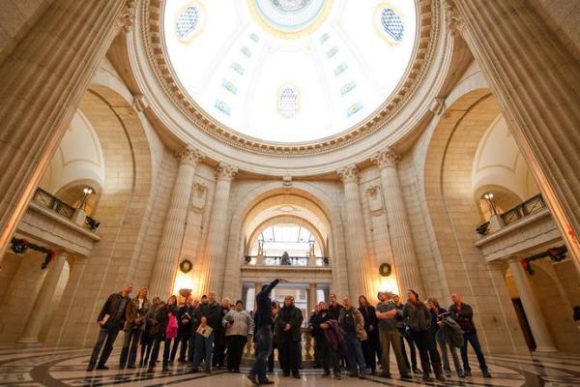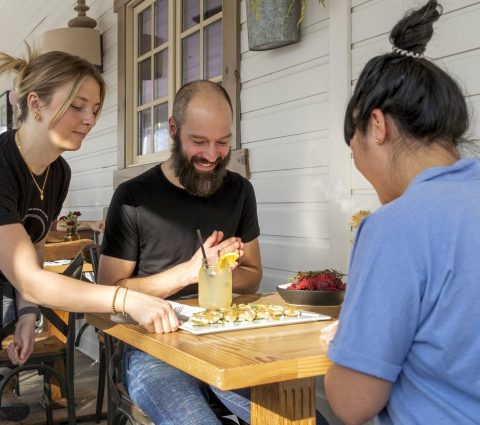- Things To Do
- Events
- Food & Drink
-
Places To Go
- Winnipeg
- Churchill
- Eastern Region
- Central Region
- Interlake Region
- Parkland Region
- Western Region
- Manitoba North
- Must-See Destinations
-
Itineraries
- Island Getaway on the Prairies
- Wheat City Wanderings in Brandon
- Escape to the water and the wild
- St. Boniface Winter: Passion and History
- Follow the path to a story in Neepawa
- Unleash your inner Viking this winter
- Explore Clear Lake this winter like never before
- Breathe in the Whiteshell this winter
- Go North for a boreal forest escape
- Treaty Areas
- Where To Stay
- Trip Essentials
- #ExploreMB Blog
Navigation Options
- FREN
- Things To Do
- Events
- Food & Drink
-
Places To Go
- Winnipeg
- Churchill
- Eastern Region
- Central Region
- Interlake Region
- Parkland Region
- Western Region
- Manitoba North
- Must-See Destinations
-
Itineraries
- Island Getaway on the Prairies
- Wheat City Wanderings in Brandon
- Escape to the water and the wild
- St. Boniface Winter: Passion and History
- Follow the path to a story in Neepawa
- Unleash your inner Viking this winter
- Explore Clear Lake this winter like never before
- Breathe in the Whiteshell this winter
- Go North for a boreal forest escape
- Treaty Areas
- Where To Stay
- Trip Essentials
- #ExploreMB Blog

Photo by Enviro Foto
Winnipeg’s signature stories
Posted June 25, 2015 | Author Alexis McEwen
What do bison, birds and a boy of gold have in common? They are the main characters in three of Winnipeg’s best stories. These stories are part of the Signature Experiences Collection, some of the coolest tourism experiences that Canada has to offer. So let’s start our story in a time when bison roamed across the land:
A Prairie Legacy
There were an estimated 30 million bison on the Great Plains, and FortWhyte Alive’s Kalyn, our guide for the day, reports that number was reduced to just 800 left in the wild in Canada by 1888. And today, FortWhyte Alive – a former cement plant turned wilderness oasis – is home to a herd of 35 bison, which we get to see up close on a bison safari.

We slowly make our way though the bison enclosure, the giant animals – the largest land animals in North America – don’t seem to mind our intrusion. Which is a good thing, because Kalyn tells us that a bison can reach 70 km/hour in three strides. And not only are bison fast, they are also agile – able to turn 90° in one move. And apparently, a bison can jump 6 feet in the air. Can you imagine? That’s crazy!
Kalyn points out the herd’s alpha male, nicknamed Chalkie. He’s easy to spot as he is by far the biggest. He’s responsible for the herd’s safety and he also has exclusive breeding rights – last year’s 12 calves and this year’s six calves, the first of which was born on Mother’s Day, are all his.
We learn about the importance of bison to Aboriginal people as we enter the tipi in the same direction the sun travels through the sky. While the bison was hunted for meat, every part of the bison had a use, from tools to clothing to utensils.
I try my hand at using a traditional atl atl, a throwing spear which was used during hunts to herd the bison into an enclosure. There is obviously a knack to the atl atl, which I did not master in just two throws.
Our story then jumps ahead to the arrival of European settlers as we visit FortWhyte Alive’s sod house, a reproduction of the type of houses that early settlers built to survive their first few years on the prairies. It’s hard to imagine living in this small and dark house (made of dirt!) while trying to make a life in an unfamiliar land.

But this unfamiliar land was a fruitful one, as the First Nations people already knew. Kalyn points out that willow contains acetylsalicylic acid, otherwise known as aspirin, aspen produces a natural sunscreen, and rosehip contains vitamin C. It also makes for a delightful tea, as she brews us her own blend of “bush tea” with rosehips, hyssop, and wild mint.
Paired with the bannock we cook over the open fire, it’s a perfect ending to this story.
Epilogue: A shout out to the delicious bison burger from the Buffalo Stone Café and FortWhyte Alive’s prairie dogs!
A Bird in the Hand
The story of the settlers continues, as more and more arrive looking for a new life Winnipeg. And to be able to give these settlers the life they are searching for, hundreds of kilometres of wetlands were drained. Flash forward to the 1970s, when Oak Hammock Marsh is restored and its colourful cast of characters – birds, geese, ducks, and other wildlife – take centre stage.

Today, Oak Hammock Marsh is home to more than 300 different species of birds (that’s half of all the bird species in Canada!) and its bird banding program helps to ensure healthy bird populations. So I join Paula the bird bander and my guide Jacques for an up close and hands on look at how the banding is done.
It takes gentle hands to get the data – age, sex, wing length, weight – used in the North American Bird Banding Program from this tree swallow. Paula gathers the data, then places a metal band with identifying numbers around his leg. Now it’s time to release the bird, and it’s my time to shine. She carefully places the bird in my hand. I release my hands and in a flash the bird is off! Fly little buddy, fly!
Next up, a yellow warbler is untangled from the net used to catch birds for banding. And surprise! This little guy (it is a male, Paula determines) is already banded. Only 1% of the birds have been rebanded. After his data is recorded, once again I hold a wild songbird in my hands before setting him free – he feels warm and soft and yet full of strength and energy.

It’s time to get the rest of marsh’s story, and to do this, Jacques and I climb into a voyageur canoe. As we paddle, he tells me about the marsh’s history – it was once a water source for the very early city of Winnipeg as well as a practice range for World War II bombers. And he tells me about the plants and animals that make this place home. Like this black tern, which thought we were getting a little too close to her nest and let us know.

Along the way, Jacques identifies the bird calls, expertly imitating the songs and chirps. Then, completely unexpectedly, he plucks a cattail from the marsh, peels off the outer leaves, slices up the base of the stem and offers me a taste. It has a crisp texture and a mild flavour – a mix of watermelon, cucumber, and celery. Make sure to ask him what other parts of the cattail you can eat – you may be surprised at his answer!
And it’s not just humans who can find tasty snacks here in the marsh – birds nest and pass through here on their migration because of the abundance of food. Jacques explains the mystery of migration, which is a good primer for even more mystery on tap in the third and final story, as the storyline advances to boomtown Winnipeg of the 1910s.
The Hermetic Code
When Frank Worthington Simon won the architectural competition to build the Manitoba Legislative Building in 1911, Winnipeg was the place to be – a thriving centre of commerce.
The house of government with the Golden Boy perched atop the dome was intended to show off the city’s stature, but Simon had a few ideas of his own. And the result is one of Winnipeg’s most fascinating stories.

The plot of this architectural odyssey is filled with arcane mystery, ancient secrets, extortion, and a passionate historian creeping around the Legislative grounds in his pyjamas at 4 am, determined to put the clues together.
I could write a book about all the secrets hidden in plain sight at the Manitoba Legislative Building, but, I don’t have to because Dr. Frank Albo, this story’s protagonist and the evening’s tour guide, already has. The Hermetic Code is the name of both the book and the incredibly fascinating tour offered by Heartland International Travel and Tours.
Frank weaves a fantastical detective tale that features hieroglyphs, alchemy, Masonic rituals, animal sacrifice, and even the holiest of holies. As Frank takes us along on his journey down the rabbit hole to unlock the building’s secrets, he gives us one warning: “Don’t believe a single word I’ve said, unless I can prove it.”

Armed with his knowledge of ancient languages, Frank shows us how he cracked the building’s codes, leaving us with one final, goose bump-inducing example of the building’s mysterious powers. I won’t spoil the ending; you’ll have to see it – and hear it – to believe it.

About The Author
I'm Alexis, Communications Manager for Travel Manitoba. I write about all kinds of awesome things that happen in Manitoba. And when I'm not writing about awesome things, I do my best to get out and experience them with my husband and two young sons.
Communications Manager
